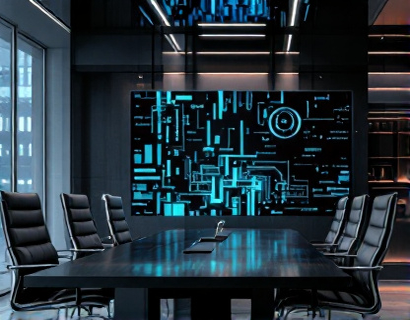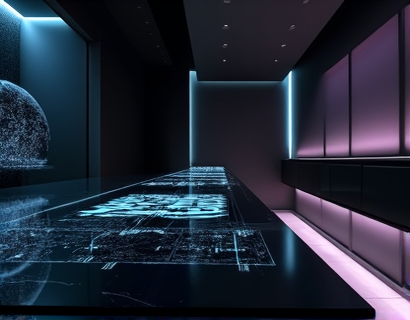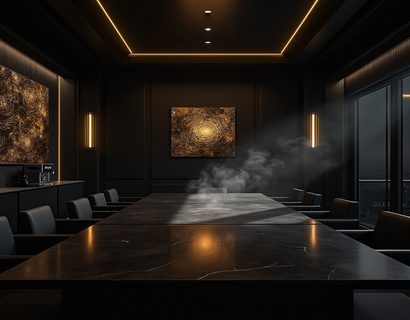Maximize Architecture Firm Efficiency with Advanced Software Solutions
In the fast-paced world of architecture, efficiency is paramount. Architecture firms are constantly seeking ways to streamline their internal processes while enhancing user experience. Advanced software solutions have emerged as a game-changer, allowing architects to focus on their creative excellence while optimizing project management, resource allocation, and client interactions. This article explores how architecture firms can maximize their efficiency through innovative software solutions, ultimately leading to improved productivity and collaboration.
The Importance of Efficiency in Architecture Firms
Efficiency in architecture firms is not just about completing projects on time; it encompasses a holistic approach to managing resources, time, and client relationships. In an industry where creativity meets technical precision, the ability to streamline operations can significantly impact a firm's success. Efficient processes lead to reduced costs, improved project timelines, and enhanced client satisfaction. As competition intensifies, firms that leverage advanced software solutions will have a distinct advantage.
Challenges Faced by Architecture Firms
Architecture firms face numerous challenges that can hinder their efficiency. These include:
- Project Management: Coordinating multiple projects simultaneously can be overwhelming, especially when deadlines are tight.
- Resource Allocation: Ensuring that the right resources are available for each project is crucial, yet often difficult to manage.
- Client Interactions: Maintaining clear communication with clients is essential for project success, but can be challenging without the right tools.
- Collaboration: Architects often work in teams, and effective collaboration is key to producing high-quality designs.
- Time Management: Balancing creative work with administrative tasks can lead to burnout and decreased productivity.
How Advanced Software Solutions Address These Challenges
Advanced software solutions are designed to tackle the specific challenges faced by architecture firms. By integrating various functionalities into a single platform, these solutions streamline processes and enhance user experience. Here are some ways in which software can help:
1. Streamlined Project Management
Project management software allows architecture firms to plan, execute, and monitor projects efficiently. Features such as task assignment, progress tracking, and deadline reminders ensure that projects stay on schedule. With a centralized dashboard, team members can easily access project information, reducing the risk of miscommunication and errors.
2. Enhanced Resource Allocation
Resource management tools enable firms to allocate resources effectively. By tracking the availability and workload of team members, firms can assign tasks based on individual strengths and capacities. This not only optimizes resource utilization but also helps prevent employee burnout.
3. Improved Client Interactions
Client relationship management (CRM) software facilitates better communication between architects and clients. By maintaining a centralized database of client information, firms can track interactions, manage feedback, and ensure that client needs are met promptly. This leads to stronger relationships and higher client satisfaction.
4. Seamless Collaboration
Collaboration tools allow architects to work together more effectively, regardless of their physical location. Features such as file sharing, real-time editing, and communication channels foster teamwork and creativity. This is particularly important in an industry where collaboration is essential for producing innovative designs.
5. Efficient Time Management
Time tracking software helps architects monitor how much time is spent on various tasks. By identifying time-consuming activities, firms can streamline processes and allocate time more effectively. This not only improves productivity but also allows architects to dedicate more time to creative work.
Key Features to Look for in Software Solutions
When selecting software solutions for an architecture firm, it is essential to consider the following key features:
- User-Friendly Interface: The software should be intuitive and easy to navigate, allowing team members to adopt it quickly.
- Integration Capabilities: The ability to integrate with existing tools and software is crucial for a seamless workflow.
- Customization Options: Firms should be able to tailor the software to meet their specific needs and processes.
- Mobile Accessibility: With the increasing trend of remote work, mobile access to software is essential for on-the-go project management.
- Robust Reporting Tools: The software should provide comprehensive reporting features to help firms analyze performance and make informed decisions.
Benefits of Implementing Advanced Software Solutions
Implementing advanced software solutions in architecture firms offers numerous benefits, including:
1. Increased Productivity
By automating repetitive tasks and streamlining processes, architects can focus on their core competencies, leading to increased productivity. This allows firms to take on more projects without compromising quality.
2. Enhanced Collaboration
With improved collaboration tools, team members can work together more effectively, leading to innovative design solutions. Enhanced communication reduces misunderstandings and fosters a collaborative culture.
3. Better Client Satisfaction
Efficient client interactions lead to higher satisfaction rates. When clients feel heard and valued, they are more likely to return for future projects and recommend the firm to others.
4. Cost Savings
Streamlined processes reduce operational costs by minimizing errors and improving resource allocation. This can lead to significant savings over time, allowing firms to invest in growth and innovation.
5. Competitive Advantage
Firms that leverage advanced software solutions can differentiate themselves in a crowded market. By delivering projects more efficiently and effectively, they can attract new clients and retain existing ones.
Case Studies: Successful Implementation of Software Solutions
Several architecture firms have successfully implemented advanced software solutions to enhance their efficiency. Here are a few examples:
Case Study 1: Firm A
Firm A, a mid-sized architecture firm, struggled with project management and resource allocation. After implementing a comprehensive project management software, they were able to streamline their processes significantly. The software allowed them to track project timelines, assign tasks, and monitor progress in real-time. As a result, they reduced project completion times by 20% and improved client satisfaction ratings.
Case Study 2: Firm B
Firm B faced challenges with client interactions and communication. By adopting a CRM system, they centralized client information and improved their response times. The software enabled them to track client feedback and manage communications more effectively. Consequently, they saw a 30% increase in repeat business and positive referrals.
Case Study 3: Firm C
Firm C, known for its innovative designs, struggled with collaboration among team members. After implementing collaboration tools, they noticed a significant improvement in teamwork and creativity. The software facilitated real-time editing and file sharing, allowing architects to work together seamlessly. This led to the successful launch of several award-winning projects.
Future Trends in Architecture Software Solutions
The landscape of architecture software solutions is continually evolving. Here are some future trends to watch:
1. Artificial Intelligence (AI)
AI is set to revolutionize the architecture industry by automating design processes and providing data-driven insights. AI-powered tools can analyze project data to suggest design improvements and optimize resource allocation.
2. Virtual Reality (VR) and Augmented Reality (AR)
VR and AR technologies are becoming increasingly popular in architecture. These tools allow architects to create immersive experiences for clients, enabling them to visualize designs before construction begins.
3. Cloud-Based Solutions
Cloud technology is transforming how architecture firms operate. Cloud-based software allows for real-time collaboration and access to project data from anywhere, enhancing flexibility and efficiency.
4. Sustainability Features
As sustainability becomes a priority in architecture, software solutions are incorporating features that help firms design eco-friendly buildings. Tools that analyze energy efficiency and material usage will be essential for future projects.
Conclusion
Maximizing efficiency in architecture firms is crucial for success in a competitive industry. Advanced software solutions offer a pathway to streamline internal processes, enhance user experience, and improve collaboration. By addressing the challenges faced by architecture firms, these solutions empower architects to focus on their creative vision while optimizing project management, resource allocation, and client interactions. As technology continues to evolve, architecture firms that embrace these innovations will be well-positioned for future growth and success.










































